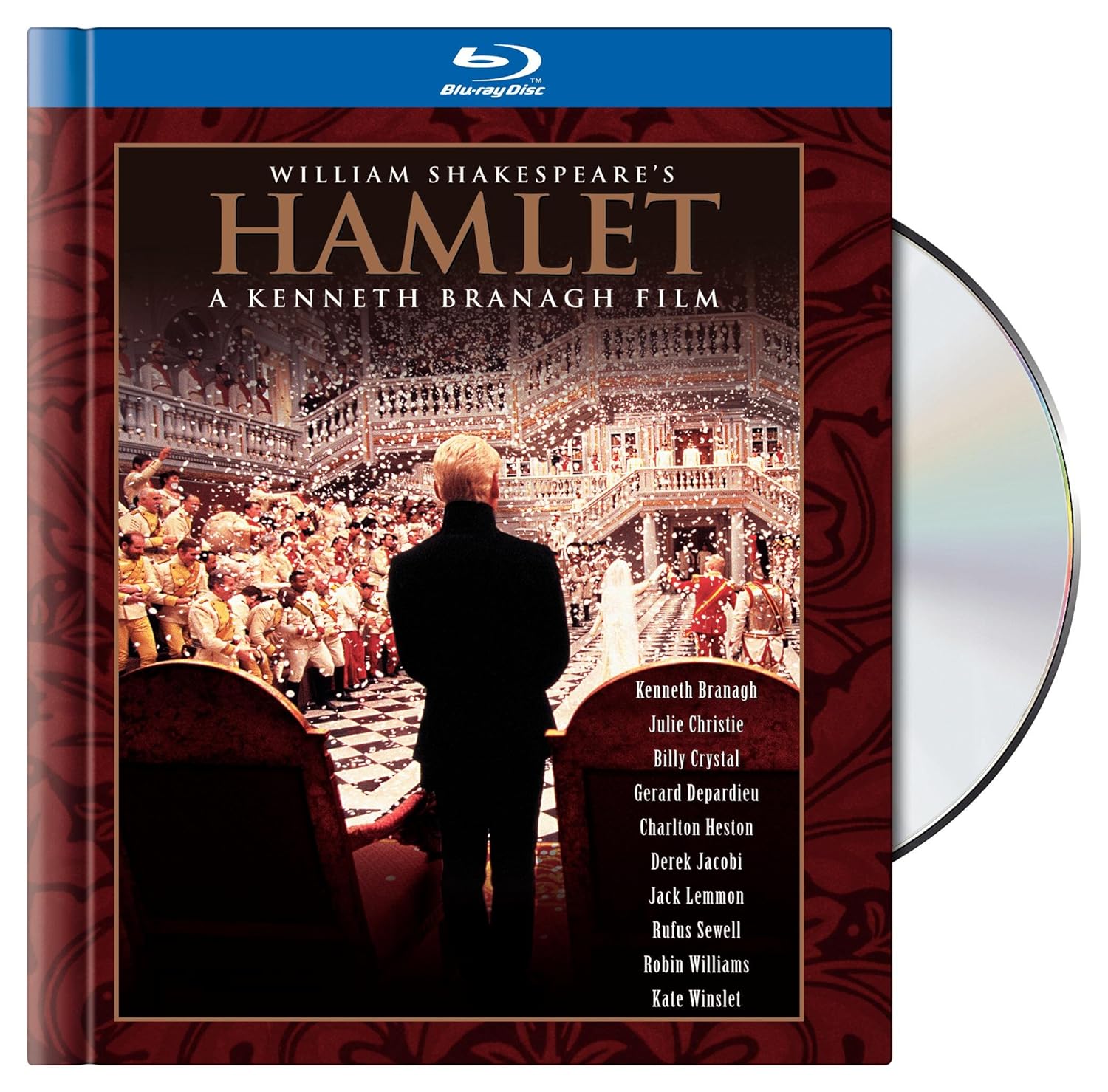 Hamlet. Dir. Kenneth Branagh. Perf. Kenneth Branagh, Kate Winslet, Richard Attenborough, Brian Blessed, Richard Briers, Julie Christie, Billy Crystal, Judi Dench, Gérard Depardieu, Reece Dinsdale, Ken Dodd, Nicholas Farrell, John Gielgud, Rosemary Harris, Charlton Heston, Derek Jacobi, Jack Lemmon, Ian McElhinney, Michael Maloney, Simon Russell Beale, Rufus Sewell, Timothy Spall, Ben Thom, and Robin Williams. 1996. DVD. Castle Rock, 2007.
Hamlet. Dir. Kenneth Branagh. Perf. Kenneth Branagh, Kate Winslet, Richard Attenborough, Brian Blessed, Richard Briers, Julie Christie, Billy Crystal, Judi Dench, Gérard Depardieu, Reece Dinsdale, Ken Dodd, Nicholas Farrell, John Gielgud, Rosemary Harris, Charlton Heston, Derek Jacobi, Jack Lemmon, Ian McElhinney, Michael Maloney, Simon Russell Beale, Rufus Sewell, Timothy Spall, Ben Thom, and Robin Williams. 1996. DVD. Castle Rock, 2007. I've been reviewing bits and pieces of the Branagh Hamlet with the theme of the winter setting in mind. Doing so has been instructive—I've forgotten so much about the four-hour-and-two-minute production (though I might not be too terribly blamed for so doing).
Branagh's production, like many others, gets around any flower-related problems (here, where Ophelia would get lilies in a frigid Denmarkian landscape) by having the flowers be imaginary. We don't need to imagine Horatio bringing hothouse flowers to her.
Ophelia does make her first appearance after her father's death in a straitjacket (see the image above), and she's treated with the intense inhumanity meted out to the non compos mentis of the film’s setting.
The question of her death that I asked earlier (who broke through the ice for her) is answered by two images. In those images, we are given to understand that it's cold—but not cold enough to freeze a river.
The most interesting thing about that isn't the change from the "brook" of Gertrude's speech (IV.vii.166) to the slowly-flowing river of the image. It's the fact that (completely uncharacteristically, especially for this film), the images come after the scene's end! Usually, Branagh cuts away during a speech like this to annotate it or to provide a flashback for his audience. Here, Gerturde's words are unadorned—at least until the end of the scene.

Ophelia: “Drown’d, drown’d” (IV.vii.84).
My next exploration may have to be Horatio—his role in this production (especially as it relates to Ophelia) is fascinating beyond measure.
Links: The Film at IMDB.
Links: The Film at IMDB.
Click below to purchase the film from amazon.com
(and to support Bardfilm as you do so).
(and to support Bardfilm as you do so).



No comments:
Post a Comment